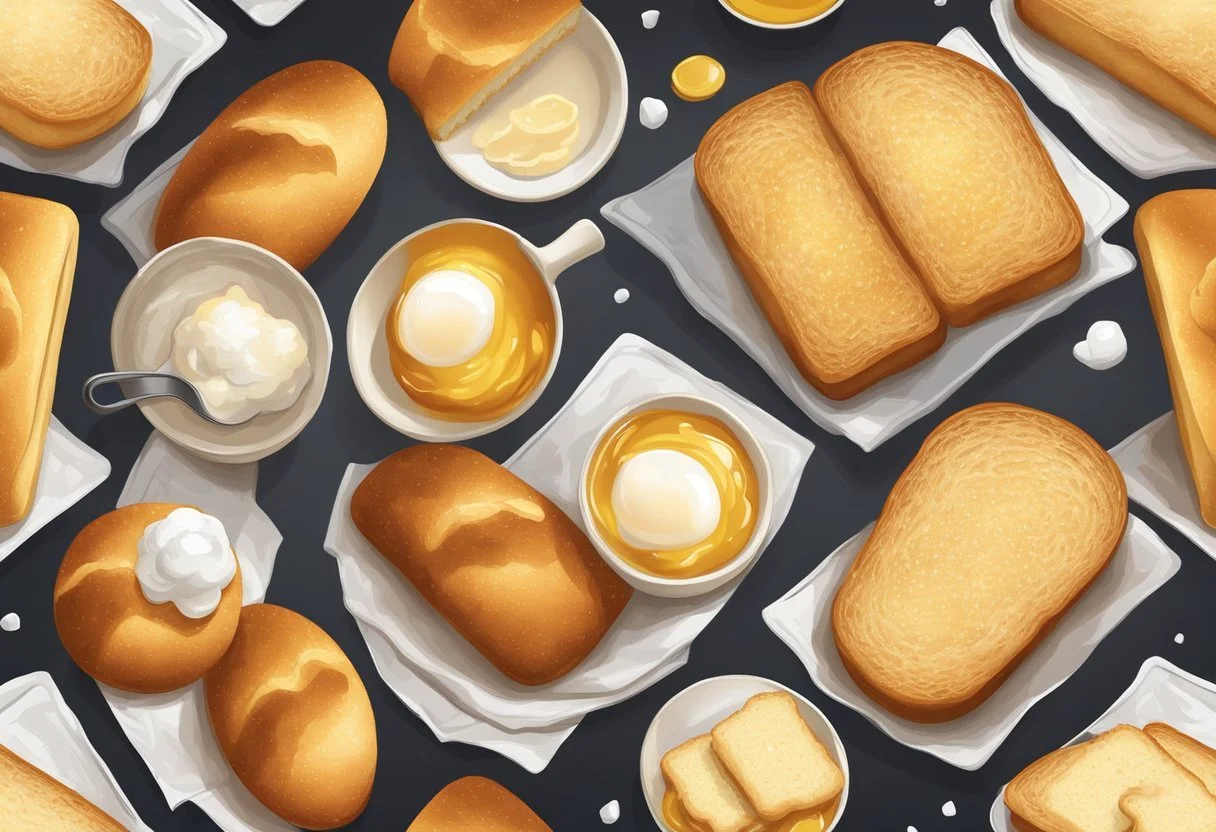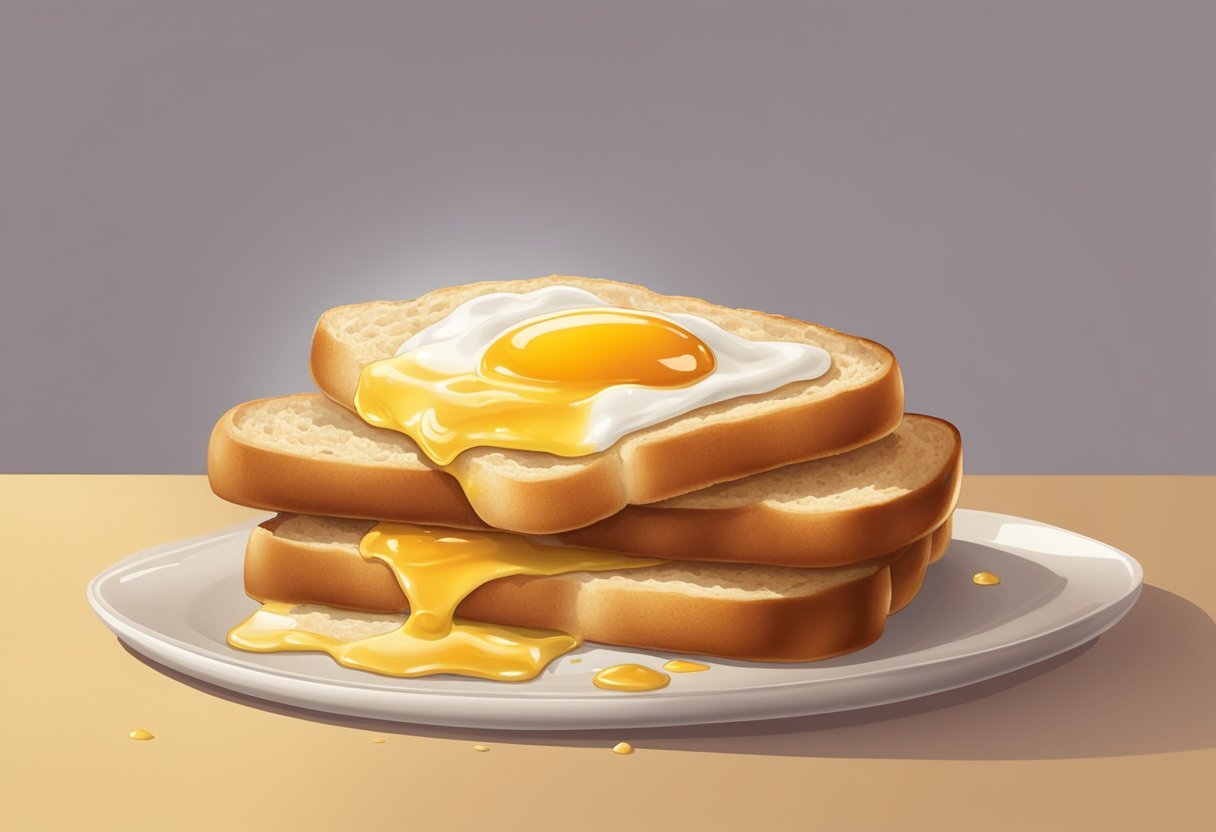How to Make French Toast: Quick & Expert Guide
Discover > Truly Texan > How to Make French Toast
The classic French toast recipe is a beloved breakfast dish enjoyed by people all over the world. This delectable treat, made using an egg and milk mixture into which you dunk bread (how long does bread last?) before frying it, has captured the hearts and taste buds of many. With a warm, crispy exterior and a soft, custard-like interior, French toast recipes can be easily customized to suit different preferences and dietary needs.
Mastering an easy French toast recipe is a simple and rewarding process. The key elements to achieving the best French toast are selecting the right fresh bread, preparing a well-balanced custard mixture, and controlling the cooking temperature. By paying attention to these aspects, anyone can create the best French toast in no time.
In this article, you will learn the step-by-step process of making mouthwatering French toast at home. From choosing the best bread to adding your preferred toppings, we will provide expert tips and guidance to help you create this classic breakfast delight. So, let's get started and bring the joy of French toast into your kitchen.
Understanding French Toast Ingredients
The Bread Factor
The foundation of the best French toast recipe is the bread. The best bread for French toast is brioche bread and challah. They are ideal choices because they're rich and buttery. Slightly stale bread works best because it absorbs the egg mixture better without becoming soggy. Thick slices of French bread, sourdough, and white bread are excellent alternatives, although sandwich bread also makes a convenient substitute. For a unique twist, easy recipes use banana bread or cinnamon bread. Croissants (how long do croissants last?) can also be used to create a rich French toast but handle with care due to their delicate texture.
The Importance of Dairy
Dairy plays a significant role in creating a creamy and rich French toast. Whole milk is the standard choice for most recipes, but using a splash of heavy cream, or half-and-half can bring a luxurious touch. Butter is essential for frying, adding an irresistible golden crust to each slice. For a non-dairy option use almond milk (how long does almond milk last?) or coconut milk for a twist.
Sweetness Aspect
Sugar (how long does sugar last?) is necessary for a great recipe to enhance the sweetness of French toast. The most popular sweeteners include maple syrup (how long does maple syrup last?), honey, brown sugar, powdered sugar, and cinnamon sugar. Each imparts a distinct flavor, so experiment to find your favorite. Be mindful not to overwhelm the sweetness, as fresh berries, jam, or hazelnut spread can already add extra sweetness.
Maple Syrup - Maple syrup adds sweetness to French toast but its flavors add something special when combined with a French toast recipe.
Honey
Brown Sugar
Powdered Sugar
Cinnamon Sugar
Avoid the crowds and shop for maple syrup, honey, brown sugar, powdered sugar, or cinnamon sugar online from the comfort of your home!
Boosting Flavor
The best French toast flavor profile can be augmented with spices, extracts, and even liqueurs. Vanilla extract and ground cinnamon are classic additions, providing warmth and depth. A pinch of salt can balance the sweetness and enhance other flavors. Nutmeg (how long does nutmeg last?), orange zest, bourbon, or liqueur can create unique and memorable taste experiences.
Flavor Boosters:
Vanilla Extract
Ground Cinnamon
Salt
Nutmeg
Orange Zest
Experience the convenience and savings of buying ground cinnamon, salt, and nutmeg online!
Other Essential Ingredients
The egg mixture will determine the French toast's overall texture and flavor. A standard ratio is one egg per half-cup of dairy. Some recipes call for egg yolks only, resulting in a much richer, denser texture. Adding fruit, such as fresh berries or strawberries, can brighten the dish, while a variety of toppings can elevate your French toast to new heights.
Preparing The French Toast
Making The Batter
To make the perfect French toast, start by creating a custard-like batter using a mixture of eggs, milk, and a bit of sugar. This combination will provide a rich, creamy texture. Adding vanilla and cinnamon will enhance the flavor. Whisk the ingredients together until smooth, ensuring even coverage when you dip the bread.
This classic recipe is easy and quick so that you can prepare this delicious breakfast in minutes. Select thick slices of bread, such as brioche or challah, for best results, as they can better absorb the custard without becoming soggy.
Cooking Details
Choose a nonstick large skillet or griddle for cooking the French toast. Heat some oil, butter or a combination of both on a low heat. Be sure that the skillet is evenly coated to prevent the slices of French toast from sticking. Once the fat begins to sizzle, it's time to add the bread.
Carefully dip each bread slice in the French toast batter, making sure to coat both sides evenly. Place the soaked bread into the heated skillet, cooking each side for 3-4 minutes or until golden brown. Adjust around medium heat as needed to ensure even browning without burning.
Online stores offer unbeatable prices for skillet, so don't miss out!
Baking or Casserole Options
Alternatively, you can opt for baking the French toast or preparing it as a casserole. For the baking method, preheat your oven to 350°F (175°C) and arrange the dipped bread slices on a baking sheet. Dip bread and drain the slices well before transferring to the baking sheet. Bake for about 20 minutes, turning the slices halfway through cooking.
For a French toast casserole, simply arrange the soaked French bread slices in a single layer in a greased shallow dish. Mix any remaining batter with an additional beaten egg, pour it over the bread, and refrigerate overnight to allow the custard to soak in. Bake at 350°F (175°C) for around 45 minutes, or until golden and puffed.
Another quick and easy alternative is making slow cooker French toast. Prepare the dish as for the casserole and cook on low for 4-6 hours, making it a perfect choice for a busy morning or brunch situation.
By following these methods, you'll have some great recipe tips and be well on your way to mastering the art of making delicious French toast in various forms to accommodate any preference or schedule.
Enhancing The French Toast
Ideal Toppings
To elevate your cooked French toast experience, several toppings can considerably enhance its taste. Classic toppings include syrup and whipped cream, which complement the dish's sweetness and soft texture. Powdered sugar can be sprinkled on top to add an extra touch of sweetness, while fresh fruit brings a burst of flavor and color. Use a sieve when sprinkling powdered sugar on your French toast recipe, so you can better control the sweetness. A combination of berries like strawberries, blueberries, and raspberries is an excellent choice.
For a twist on traditional toppings, try drizzling honey or spreading some fruit jam. Don't hesitate to experiment with cinnamon sugar for a warm, spiced note. Indulgent options like hazelnut spread or caramel work well if you're looking for something decadent.
Delicious Variations
A basic recipe for best French toast, also known as pain perdu, can be transformed into numerous delicious variations. An example of a simple modification is caramelized French toast, where slices of bread are cooked with a caramel sauce, providing a rich, golden-brown coating.
For those who crave variety, a stuffed French toast recipe offers endless possibilities. Stuff your French toast with a mixture of cream cheese (how long does cream cheese last?) and fruit, such as sliced strawberries or a berry compote, for a creamy and tangy contrast.
Remember, the best French toast recipe can be as simple or elaborate as you desire. It's a versatile dish that can easily be tailored according to personal taste or dietary preferences. Whether you stick to classic toppings or branch out into more adventurous combinations, there's no limit to the mouth-watering creations you can make from this timeless breakfast staple.
Nutritional Content of French Toast
Basic Nutrition Facts
French toast is a popular breakfast dish made from bread soaked in a mixture of eggs, milk, and sugar, and then cooked on low heat until golden brown. The nutritional content of French toast can vary depending on the recipe and the ingredients used. Here is a breakdown of the nutritional content per serving of a typical French toast recipe (approximately 2 slices):
Keep in mind that these values may differ depending on the type of bread, eggs, and milk used. Additionally, toppings such as syrup, butter, or fruit will also affect the overall nutritional content.
Healthier Modifications
There are several ways to make French toast healthier without compromising taste. Some modifications include:
Choosing whole-grain bread: Whole-grain bread has more fiber and nutrients compared to white bread. This will ensure a higher fiber content and can help to manage blood sugar levels.
Using low-fat milk: Opting for low-fat or skim milk reduces the calories and saturated fat content of the dish.
Reducing sugar: Cut down the sugar in the recipe or use natural sweeteners like honey or maple syrup sparingly.
Adding fruit: Serve French toast with fresh fruits such as strawberries, blueberries, or bananas, which add natural sweetness and additional nutrients.
Limiting toppings: Use toppings like syrup and butter sparingly, as they can significantly increase the calorie, sugar, and fat content.
By making these healthier modifications, you can enjoy the best French toast recipe as a nutritious and satisfying breakfast option while reducing the calorie, sugar, and saturated fat content. Don't forget you can also freeze French toast for a super quick breakfast next time.





